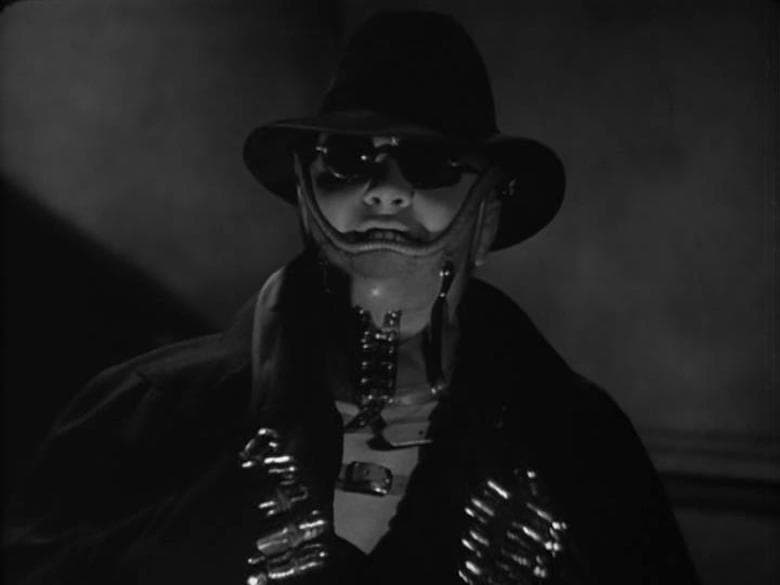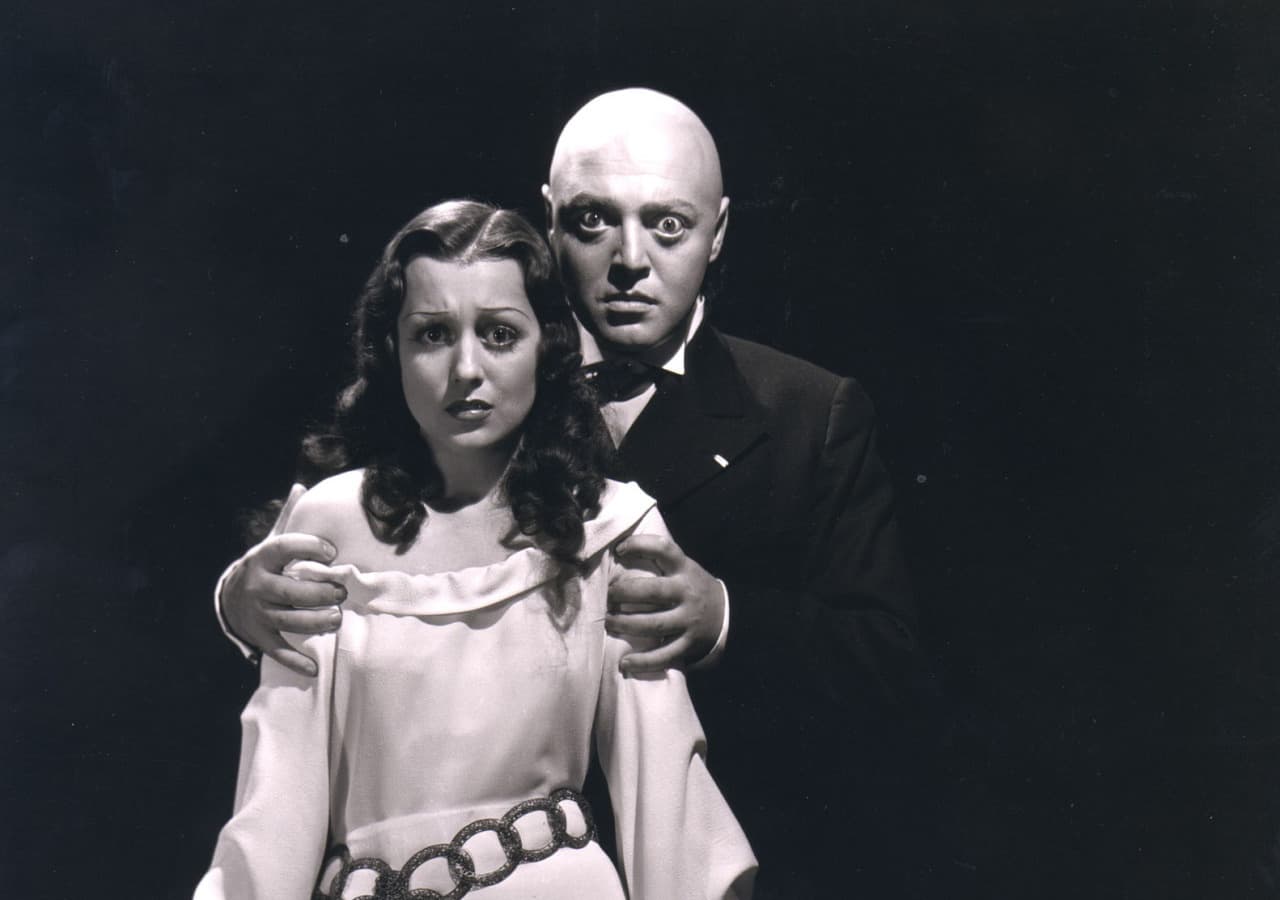The 1930s were peak in Hollywood’s Golden Age of horror. Universal led the way with its legendary monster movies and Paramount added sophisticated suspense to the genre. In 1935, MGM decided to release the horror-thriller movie Mad Love, directed by Karl Freund and starring Peter Lorre in his American debut.
In Mad Love Peter Lorre, a highly publicized talent, harnessed a dark glamor with his emotive acting. Bringing an amalgamation of repulsiveness and vulnerability into each role that the audience sympathizes with against their will.
Mad Love (1935): A Summary
The famous surgeon, Dr. Gogol sits in private box at the “Théatre des Horreurs”, just as he has for the last 47 nights. Blissfully gazing upon Madame Yvonne Orlac as she is tortured on stage as the Duchess. Having sent flowers and notes to her dressing room for each performance, he finally approaches her dressing room on closing night. Yet he is crushed to learn she is married to concert pianist, Stephen Orlac. As he wraps up a tour, Yvonne retires from the stage to join him at last. The dejected Gogol comforts himself by purchasing the theater’s promotional wax figure of Yvonne from the lobby. Having it delivered to his private chambers to do with as he pleases, without fear of rejection.
While enroute to meet with his wife, Stephen is mangled in a terrible train wreck. Crushing his hands which must be amputated to save his life. Yvonne is desperate to preserve her husband’s livelihood and begs Dr. Gogol for a miracle. His surgical genius is struck with divine inspiration and Stephen is given a hand transplant, the donor of which being a recently executed knife thrower from the circus.

The surgery is a success, but Stephen is repulsed by his transplants that require long and expensive treatments. They don’t take to playing the piano as they once did but now seem to have a talent for knives. The Orlacs are forced to sell all their valuables as the bills pile up, straining their marriage much to Gogol’s delight.
With murder hanging in the balance, Stephen descends into madness. Luring Yvonne to Dr. Gogol for answers, like a fly to a carnivorous plant.
I Have Conquered Science! Why Can’t I Conquer Love?
Mad Love was the first of many remakes of Orlacs Hände (The Hands of Orlac), an Austrian silent horror film directed by expressionist veteran, Robert Wiene.
This version focused more on the unraveling of Stephen as the protagonist, rejecting his evil willed appendages and featuring a con man as the villain. Wiene’s film itself was inspired by a 1920 French fantasy/horror novel, Les Mains d’Orlac. Written by Maurice Renard, it is cited as one of the earliest appearances of body horror.
The movie Mad Love is less faithful to Renard’s novel than Frankenstein or Dracula are to their origins in gothic literature. Which comes as no surprise that the script writer, John L. Balderston, had previously written on those film adaptations along with The Mummy and The Bride of Frankenstein. Balderston expanded on an otherwise minor character by combining the novel’s benign doctor with Spectropheles, a grotesque figure clad in white that haunts Stephen Orlac’s wife throughout Renard’s version. Regarded as the ghost of the train accident in the book and on screen as Dr. Gogol, a ghoul in white surgical scrubs. Both personal devils of Mrs. Orlac that must be faced before all is lost.
Balderstone had composed the film’s dialog with Lorre in mind, at points calling for the actor to deploy his “M look”. Referring to Lorre’s breakthrough role as Hans Beckert, a child murderer in Fritz Lang’s 1931 thriller, M. A Weimar Republic-era movie that would type cast the actor for the rest of his career. The tortured Stephen Orlac is played by, Colin Clive. No stranger to horror as the memorable Dr. Henry in Frankenstein and Bride of Frankenstein. Keye Luke appears as Gogol’s assisting surgeon, Dr. Wong. Best known for his role as Lee Chan in the Charlie Chan films and appearing with Peter Lorre in 1938 film Mr. Moto’s Gamble. Edward Brophy plays Rollo the knife thrower, on his way to the guillotine. Brophy had also played a knife throwing circus performer named Rollo in the 1935 movie Freaks. Possibly setting the cult film within the same cinematic universe as Mad Love.
— FOUNDATIONS OF HORROR —
Further explore these subgenres & tropes. more>>
#Gothic horror | #Mad Scientist | #Body Horror

Other film adaptations include The Hands of Orlac (1960) directed by Edmond Greville and Hands of a Stranger (1962) directed by Newt Arnold. The premise of a killer transplant inspired a number of other films such as The Crawling Hand (1963), The Hand (1981), and Les Mains de Roxana (2012).
On television the movie Mad Love and other adaptations have influenced a segment of Rod Serling’s Night Gallery and the Doctor Who serial, “The Hand of Fear”. A variant of the theme was used in an unproduced project of Alfred Hitchcock, The Blind Man and parodied in The Simpsons’ “Treehouse of Horror IX”.
It has even been suggested that Mad Love directly inspired the visual style of Orson Welles’ Citizen Kane.
“Each Man Kills The Thing He Loves”
Though upon initial release the movie Mad Love was a commercial failure, it has grown a devout following through the years, amassing an audience that appreciates Freund and Balderston weaving as many horror tropes within their movie as they could. From set designs to borrowed lines, the film pays tribute to its expressionistic roots and other heavy hitters in the genre.
The film title Mad Love is more obviously in reference to the sadistic obsession Gogol has for the actress and the skin-crawling scenes of his entitled wooing. Perhaps it also regards Yvonne’s devotion to her husband, Stephen. Resorting to desperate measures to care for the wreck-mauled pianist. Including reaching out to a repugnant stage-door johnny and admittedly trading on his unrequited feelings. Unknowingly evoking a madness in their lives that can only come from “love”.
Last Updated on December 29, 2021.

